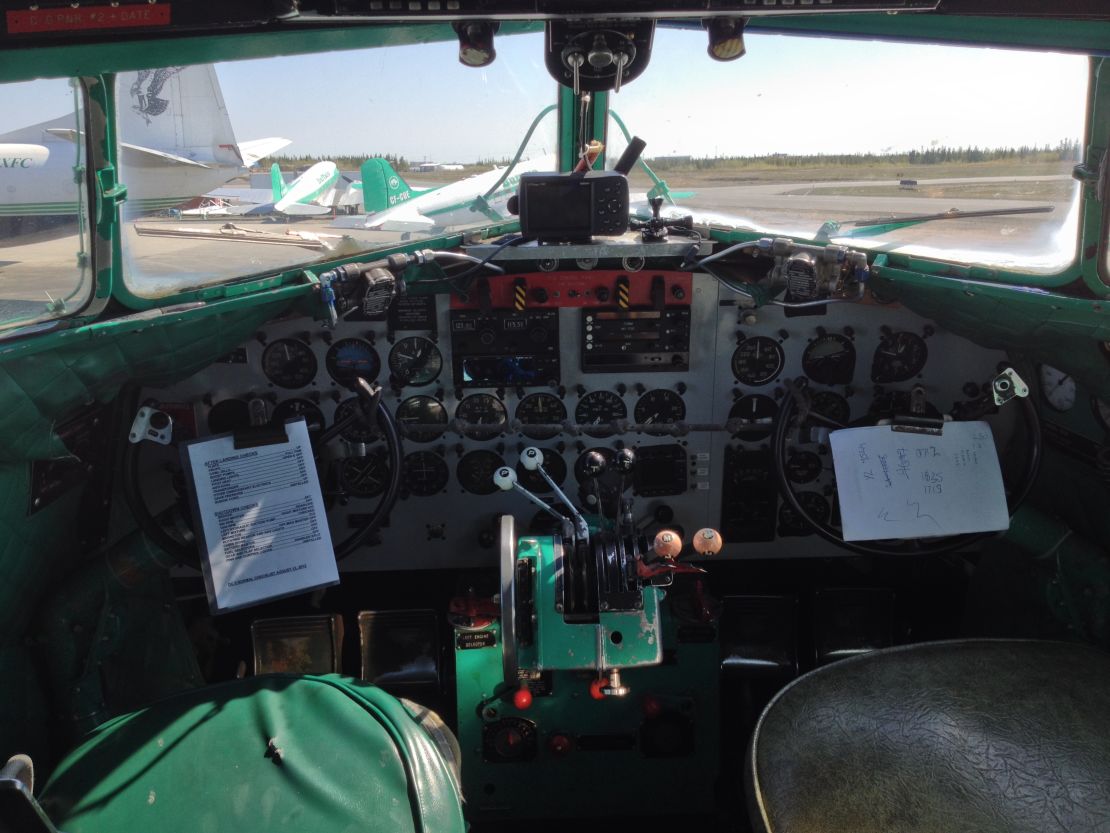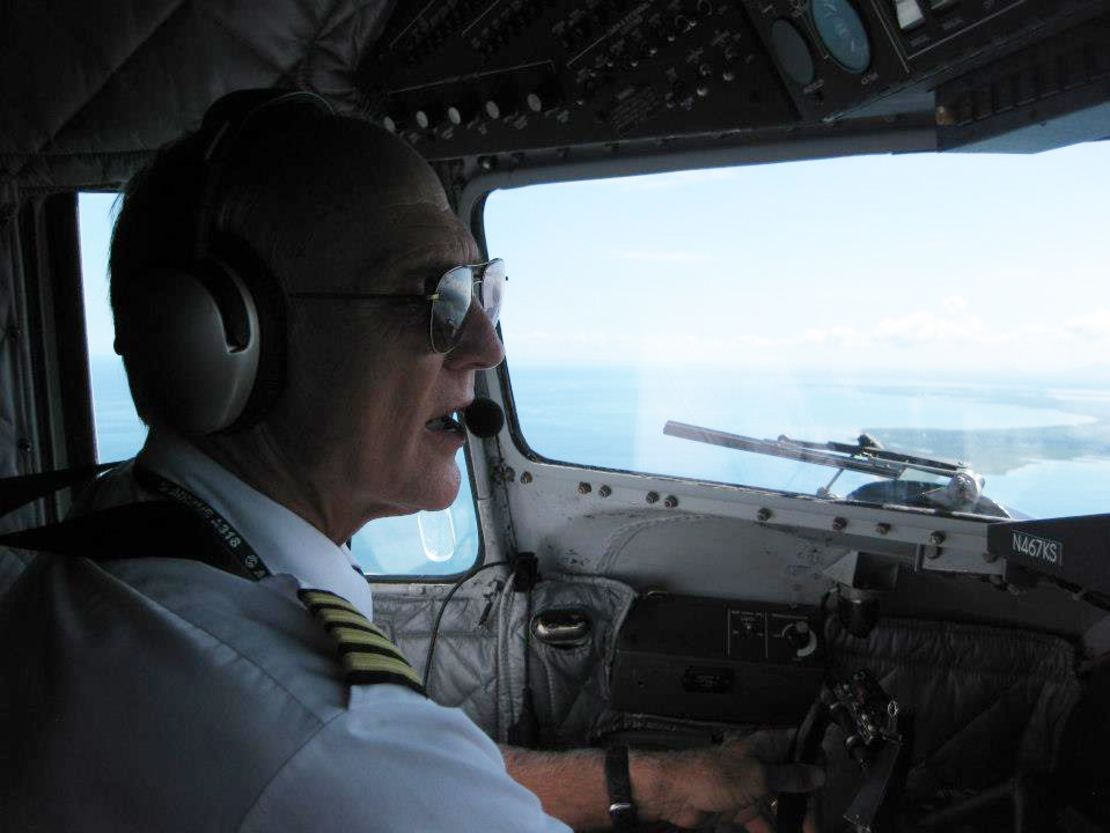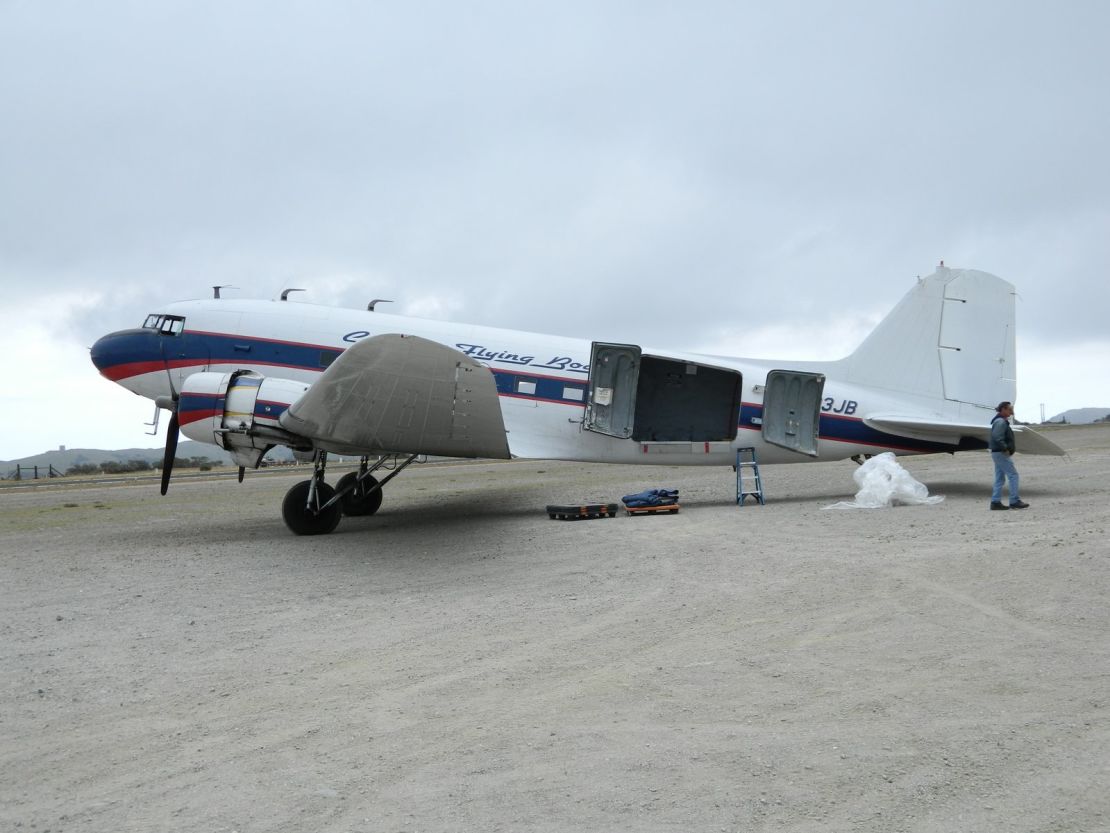Editor’s Note: From July 14 to 20, Farnborough will be the center of the aviation world as the town hosts its biennial airshow. From the latest technology and trends to deals and developments, CNN will be on the ground to bring you all the buzz from the event.
Story highlights
Hundreds of Douglas DC-3 airliners still fly, nearly 80 years after their introduction
Canada's Buffalo Airways offers scheduled passenger flights on DC-3s.
DC-3s opened the door to profitable coast-to-coast airline routes
Nickamed "Gooney Birds," the DC-3s are known for their rugged landing gear and airframes
James Bond piloted a Douglas DC-3 airliner. Indiana Jones hopped a ride on one for his last crusade. This aviation icon even stars in a reality TV show.
Almost 80 years after its introduction, a few hundred DC-3s are estimated to still be flying worldwide. That’s kind of unbelievable in an age when dozens of younger types of airliners have already retired to aviation boneyards.
“When we take them to air shows I watch people gravitate toward (them),” says Joe McBryan, co-star of History Channel’s “Ice Pilots.” McBryan owns Canada’s Buffalo Airways and its six operating DC-3s. “People always have a story. They say their dad or grand-dad flew one … or they flew on one when they were young.”
The DC-3 debuted in the mid-1930s as an aviation rock star. With its two powerful propeller engines it revolutionized the travel industry by cutting typical coast-to-coast flight time across the United States from 25 hours to just 18. Although it typically seated only about 21 passengers, the plane allowed airlines to make a giant leap toward profitability.
Later a military version of the plane helped win World War II by dropping thousands of paratroopers during the D-Day invasion of France, 70 years ago this month.
Result: The DC-3 has touched millions of lives.
But what about this plane keeps it flying all these years later?
The DC-3 flies high after 80 years
Pilots will tell you the DC-3 won’t quit because it was so well-built. Some say its design and rugged landing gear helped it touch down safely on short runways.
A day in the life of the world’s busiest airport
But for McBryan – age 70 and still flying almost daily – it’s about love.
“You can choose your friends and coworkers but you can’t choose the one you love. An airplane is the same. And in 1969, the DC-3 came and it stayed with me,” McBryan says.
During some of the coldest weather on the planet, McBryan’s planes ferry tourists, hunters, adventurers and regional workers across Canada’s remote Northwest Territories.
The 45-minute DC-3 flights from Yellowknife across icy Great Slave Lake to Hay River are pretty basic. Passengers get no meals, no WiFi, no video. “There’s coffee and cookies and juice,” McBryan says. There is an alternative to in-flight entertainment: “A lot of passengers like the sound of the engine. It will lull you to sleep. It’s a perfect sleeping noise.”
McBryan’s son once said the engines sound like a “funeral procession for the Hell’s Angels.”
On the flight deck, for McBryan, it’s all about the plane’s feel. These classic aircraft are controlled with a yoke connected directly by cables to the tail and wings. No fancy fly-by-wire electronics like newer airliners. No flashy heads-up displays for speed or altitude, either. An old fashioned instrument panel works just fine, thank you very much.

“It’s very comfortable,” he says. “You’re in your own nest. You have the ability to feel what the airplane’s doing.”
007 flies the Gooney Bird
In 2008, a Gooney Bird helped James Bond get out of a jam.
Fans of the Bond film “Quantum of Solace,” may recall actor Daniel Craig in the cockpit of a beat-up DC-3.
“Let’s see if this thing will fly,” Bond says in the film.
Does it? Oh yeah. And then some.

After takeoff, a super-fast jet fires on the Gooney Bird, forcing Bond to use the DC-3’s slow speed to outwit the jet pilot. The jet winds up as a stain on a rocky mountainside. Chalk up a win for low and slow.
Back in the 1980s, a DC-3 served another movie franchise hero. In “Indiana Jones and the Last Crusade,” Indy flies from New York to Newfoundland to the Azores and Europe on his quest for the Holy Grail.
Taildraggers
Getting on board a DC-3 is an uphill climb. Literally. The plane’s tail sits on the ground when it’s not flying, forcing passengers to walk up a steeply inclined aisle to take their seats.

“One of the most common comments I hear when some passengers come on board is, ‘Wow, there’s really an angle here,’ ” says Ric Hallquist, a longtime pilot for Missionary Flights International.
Three times per week, Hallquist flies DC-3s loaded with cargo or passengers from South Florida to the Caribbean. In addition to passengers, Hallquist and his co-pilots have hauled horses, ATVs and pretty much any legal cargo they can fit through the aircraft door.
Douglas DC-3 airliner
Douglas DC-3 airlinerTypical coast-to-coast ticket in 1940: $300 ($4,918 in 2014 dollars)Military version, C-47, used in WW II for cargo and troopsNumber of DC-3s still flying today: at least 400Introduced by Douglas Aircraft in 1936Features: cantilevered metal wings, retractable landing gear
The Gooney Bird’s rugged landing gear with its big struts can handle rough runways in places like Haiti or the Dominican Republic, Hallquist says. “And the air frame is just so strong, it really is.”
But the plane can also be temperamental, especially for pilots without much DC-3 experience, says Catalina Air Boats pilot Robby Bolling, who flies a daily DC-3 cargo route from Long Beach, California, to Catalina Island, about 30 miles offshore.
“You just have to respect it, not abuse it,” says Bolling. “I kind of feel like I’m going back in time to the 1940s or ’50s. flying these airplanes around.”
When the DC-3 flies, folks around the airport start shooting photos, Bolling says. “I always notice that. It’s kind of like a rock star.”
Bolling fears the plane won’t be around much longer. He says he’ll miss it.
Back in Yellowknife, ice pilot McBryan sees it differently. He believes the planes could easily fly for another 30 years
“They keep making parts, so there won’t be a shortage,” says this son of a prospector. If anything stands in its way, McBryan says it will be a shortage of leaded fuel that his DC-3’s engines burn. The environmentally hazardous leaded fuel is being phased out.
But losing the DC-3 would be a shame, McBryan says. There’s simply nothing else like it. The plane is about as near humans will get to growing wings.
“Strap a DC-3 to your a** and let the wings extend out,” he jokes. “That’s the closest thing you will come to a human flying.”




























